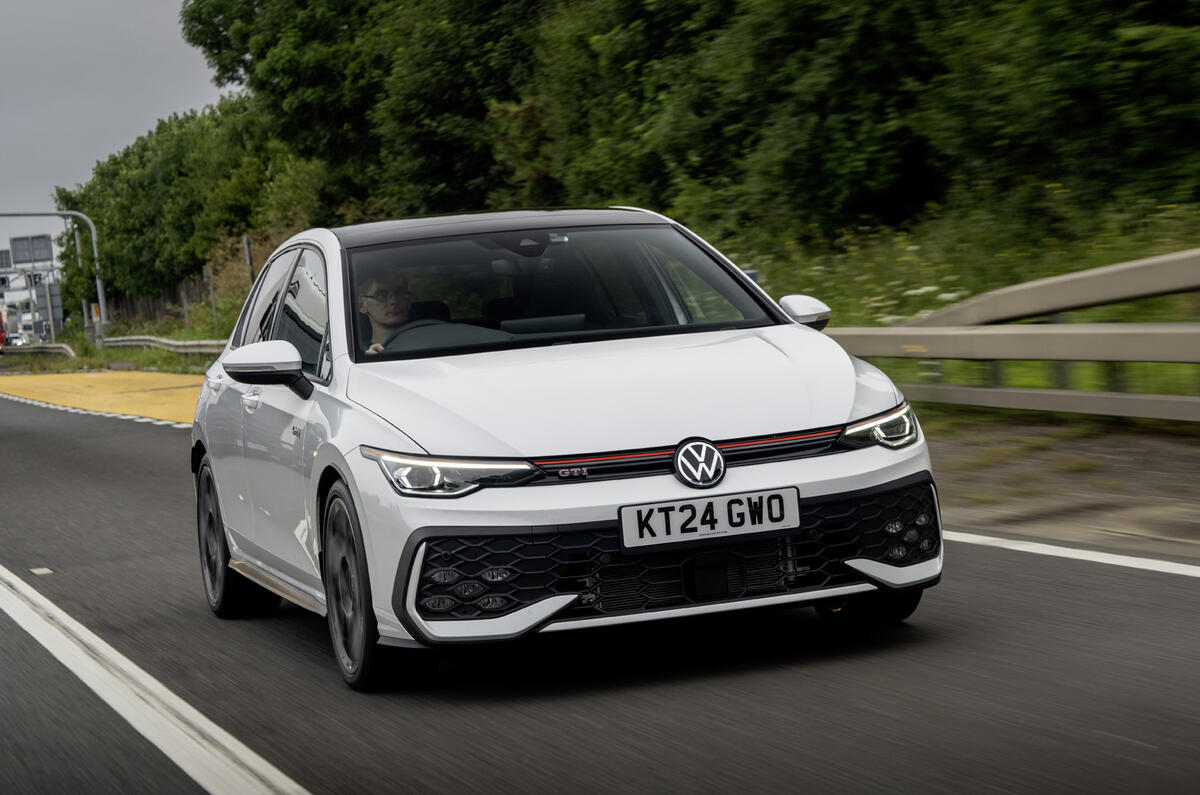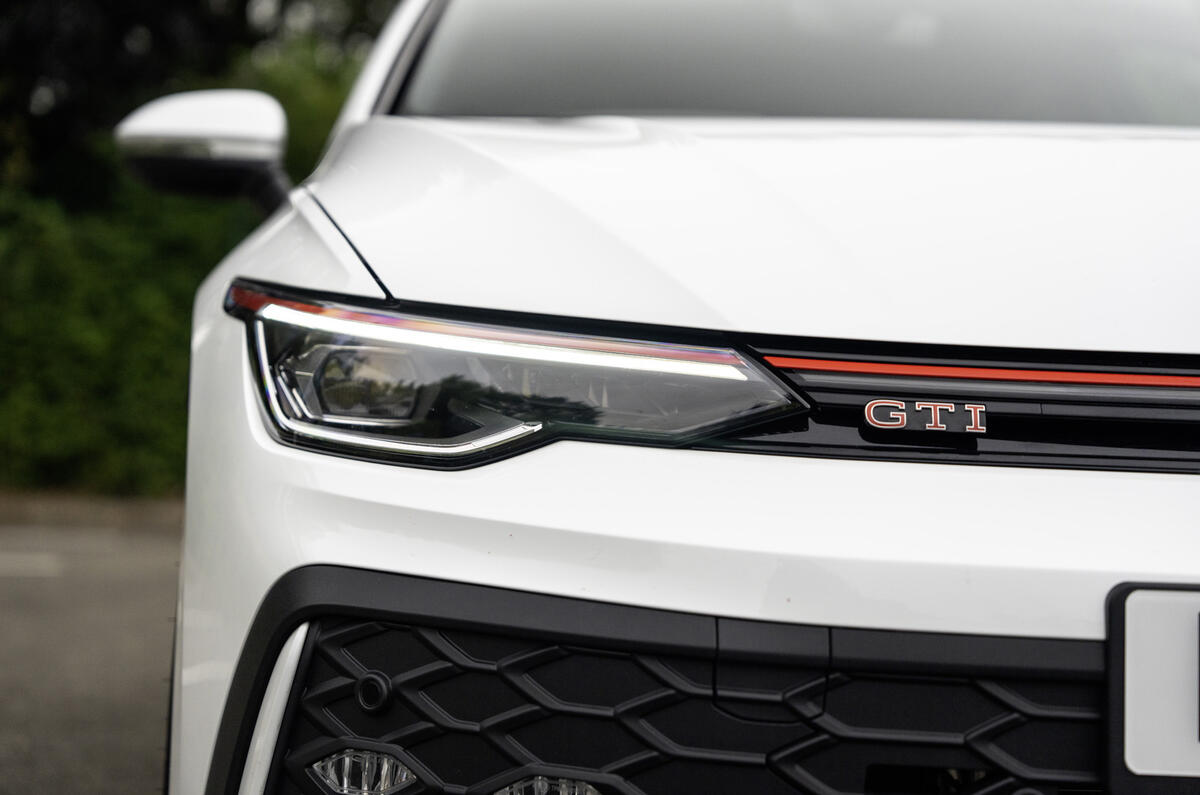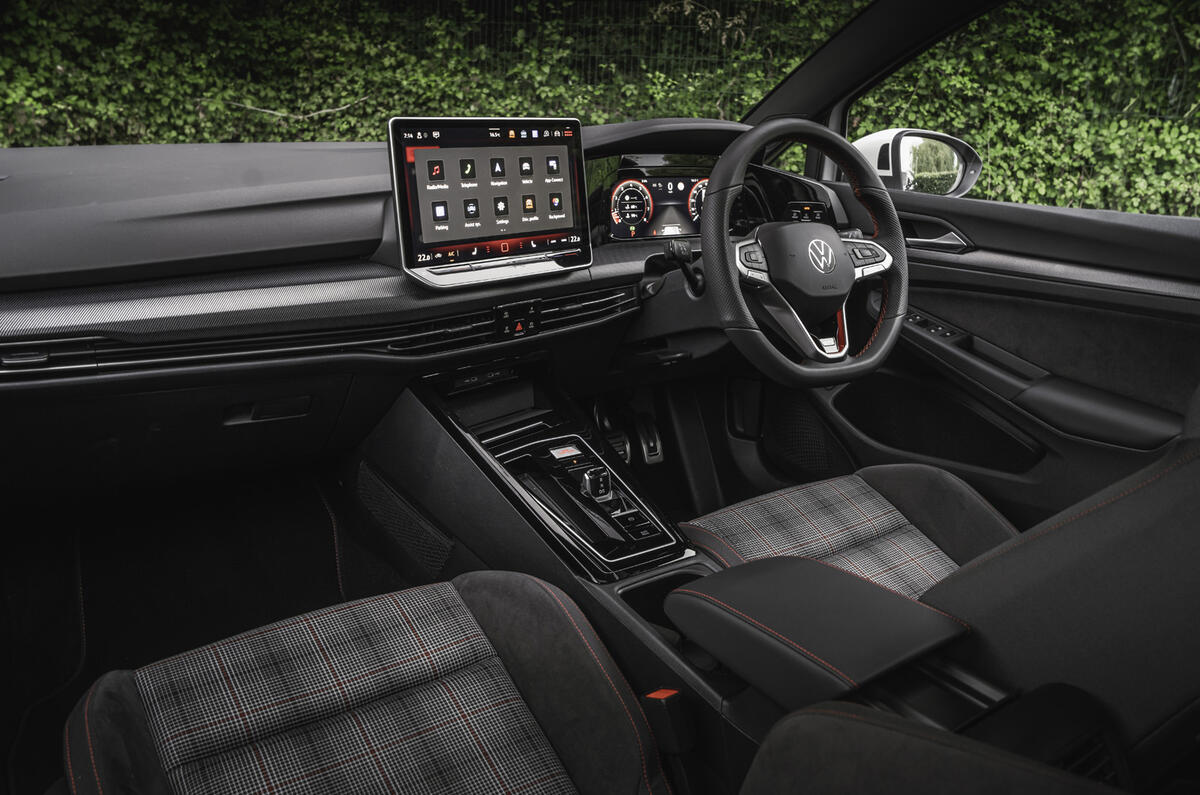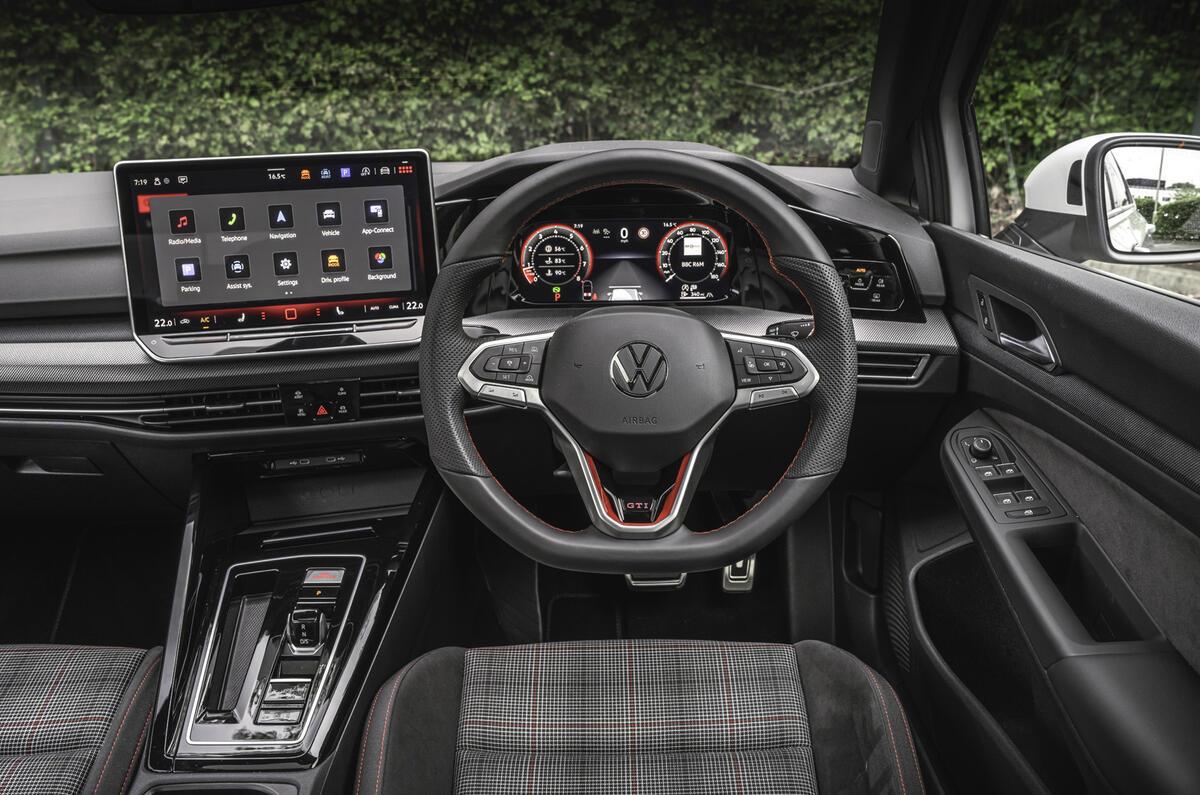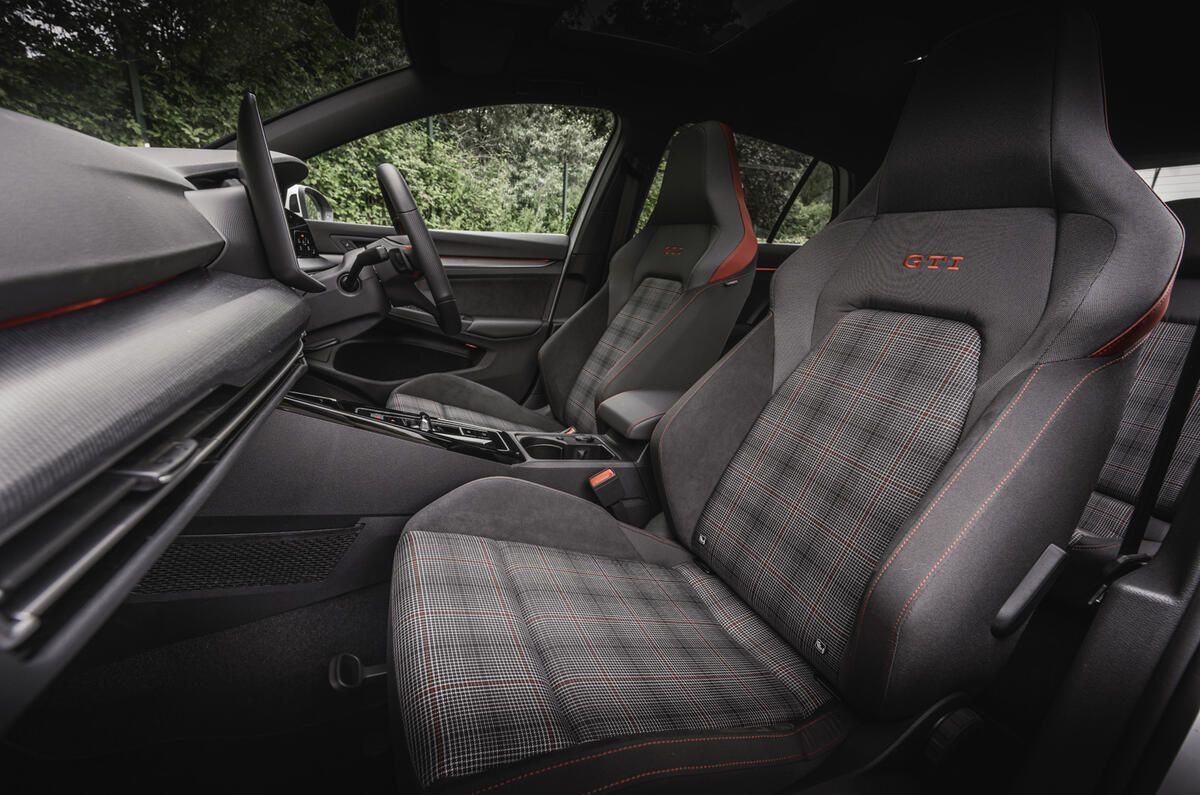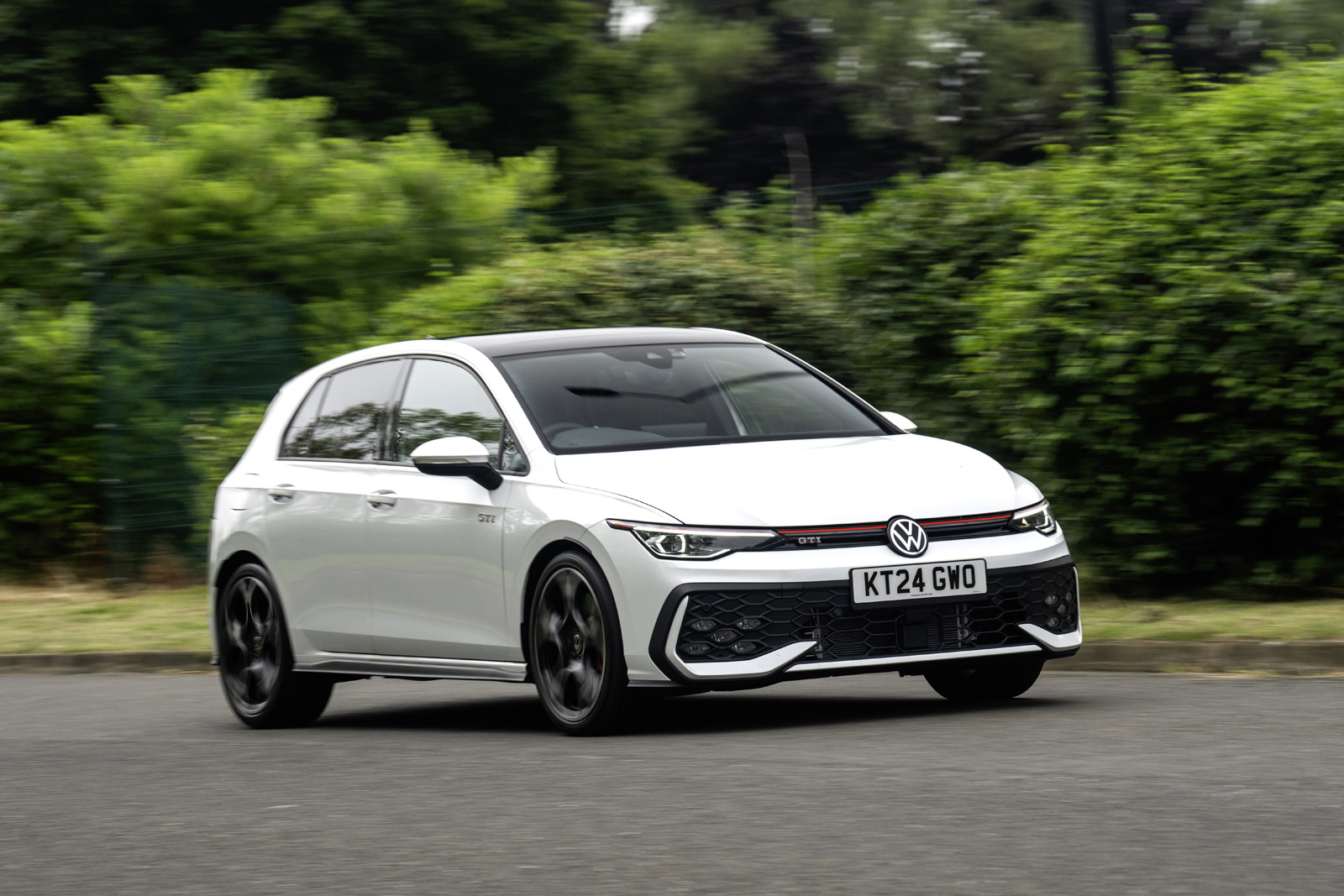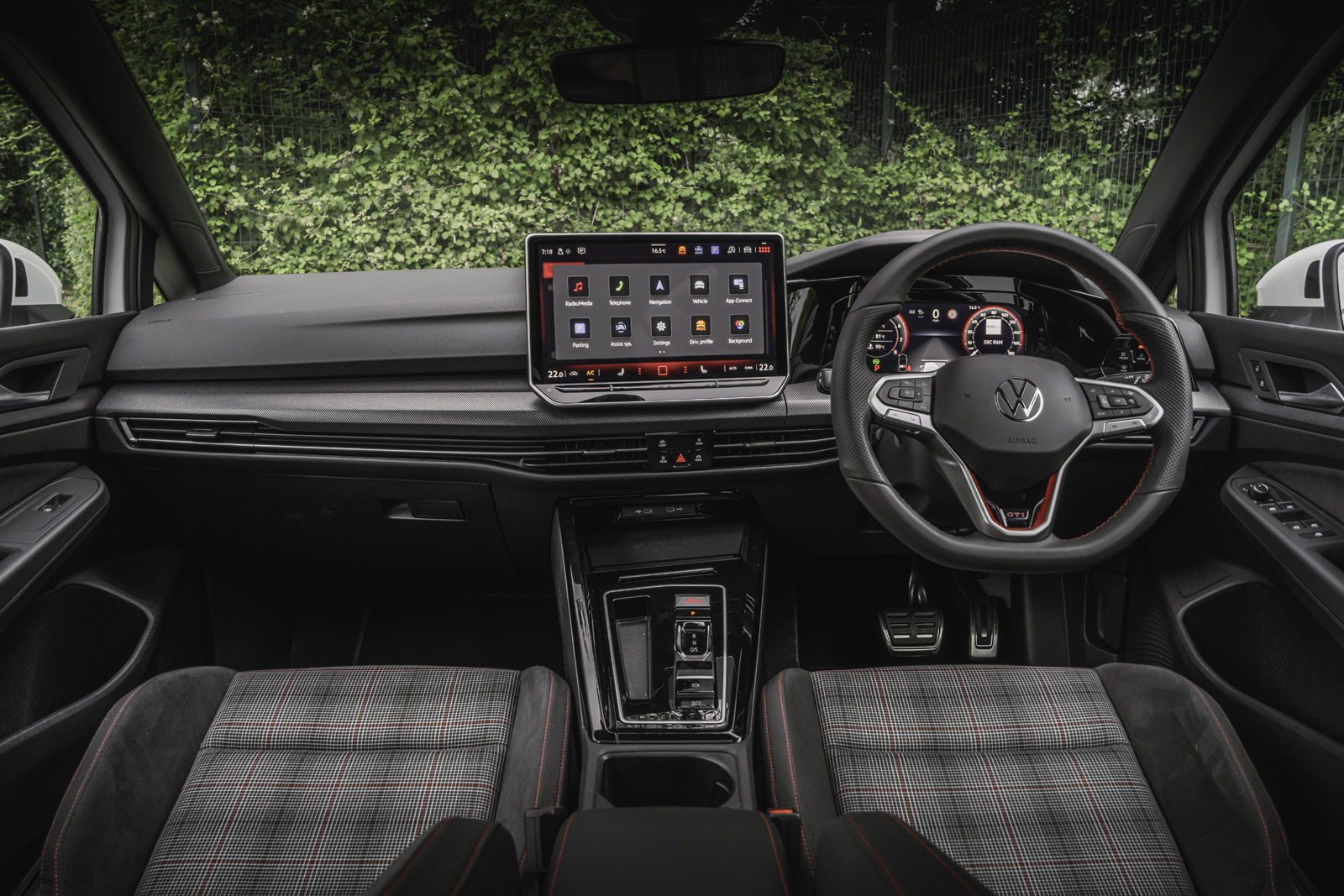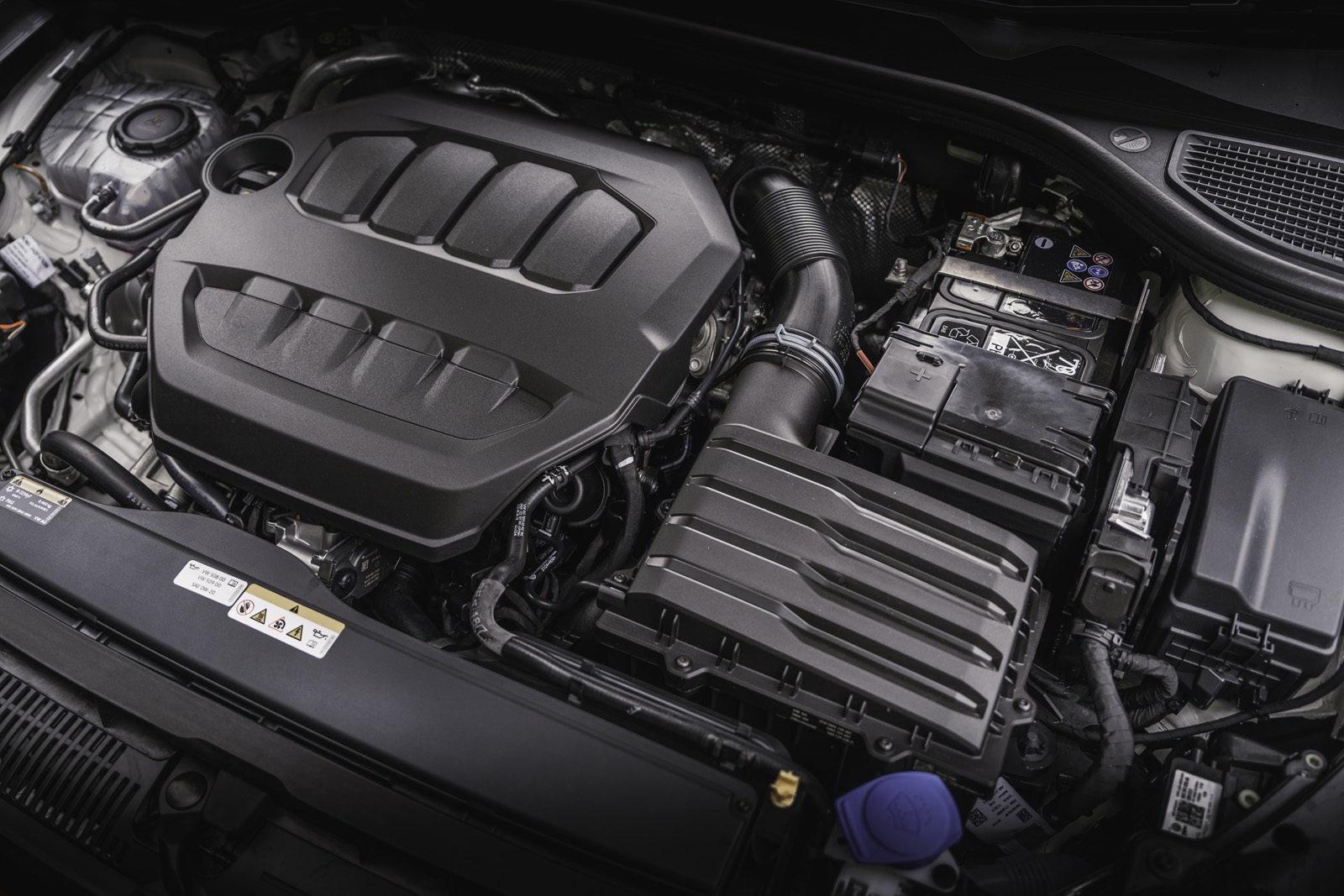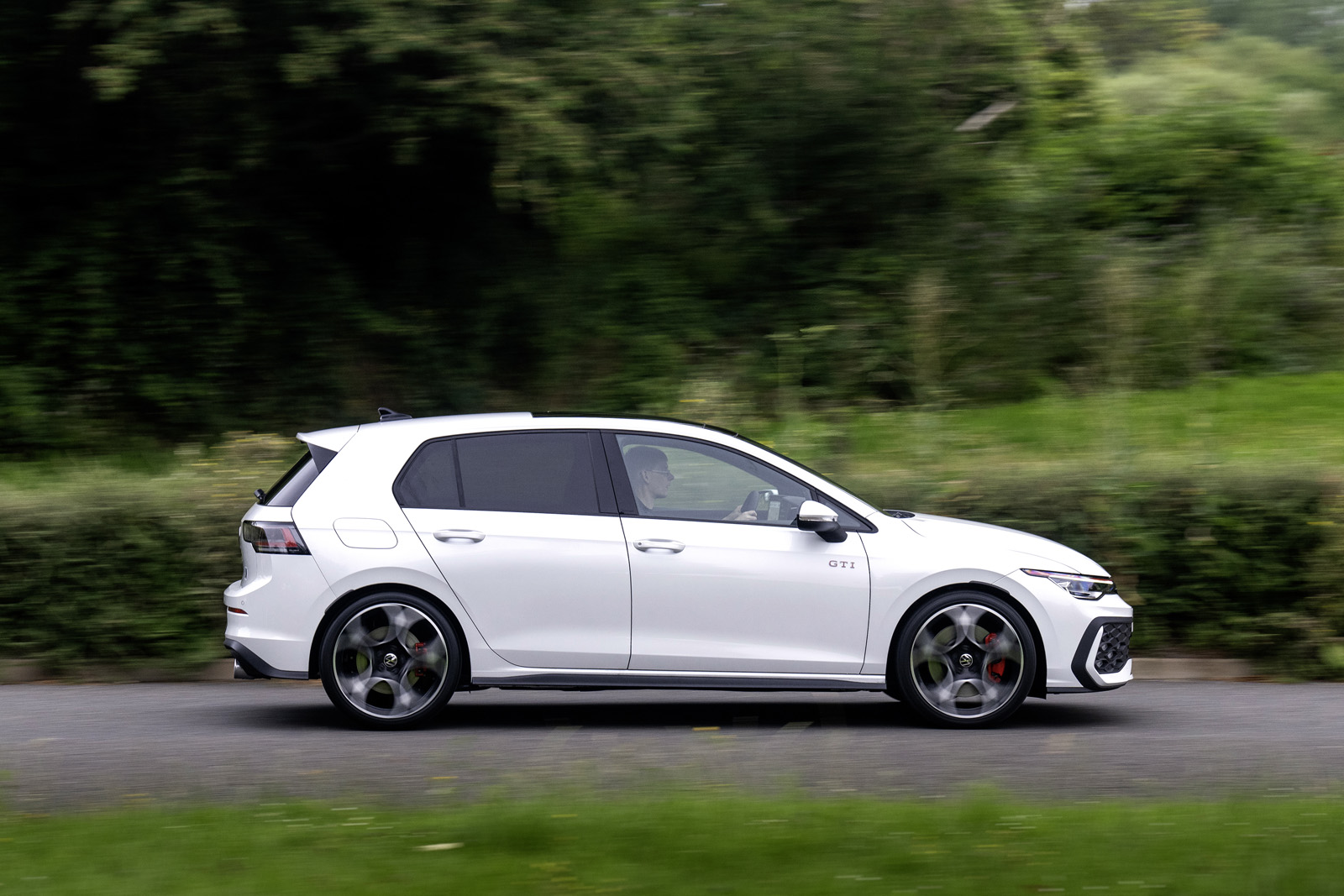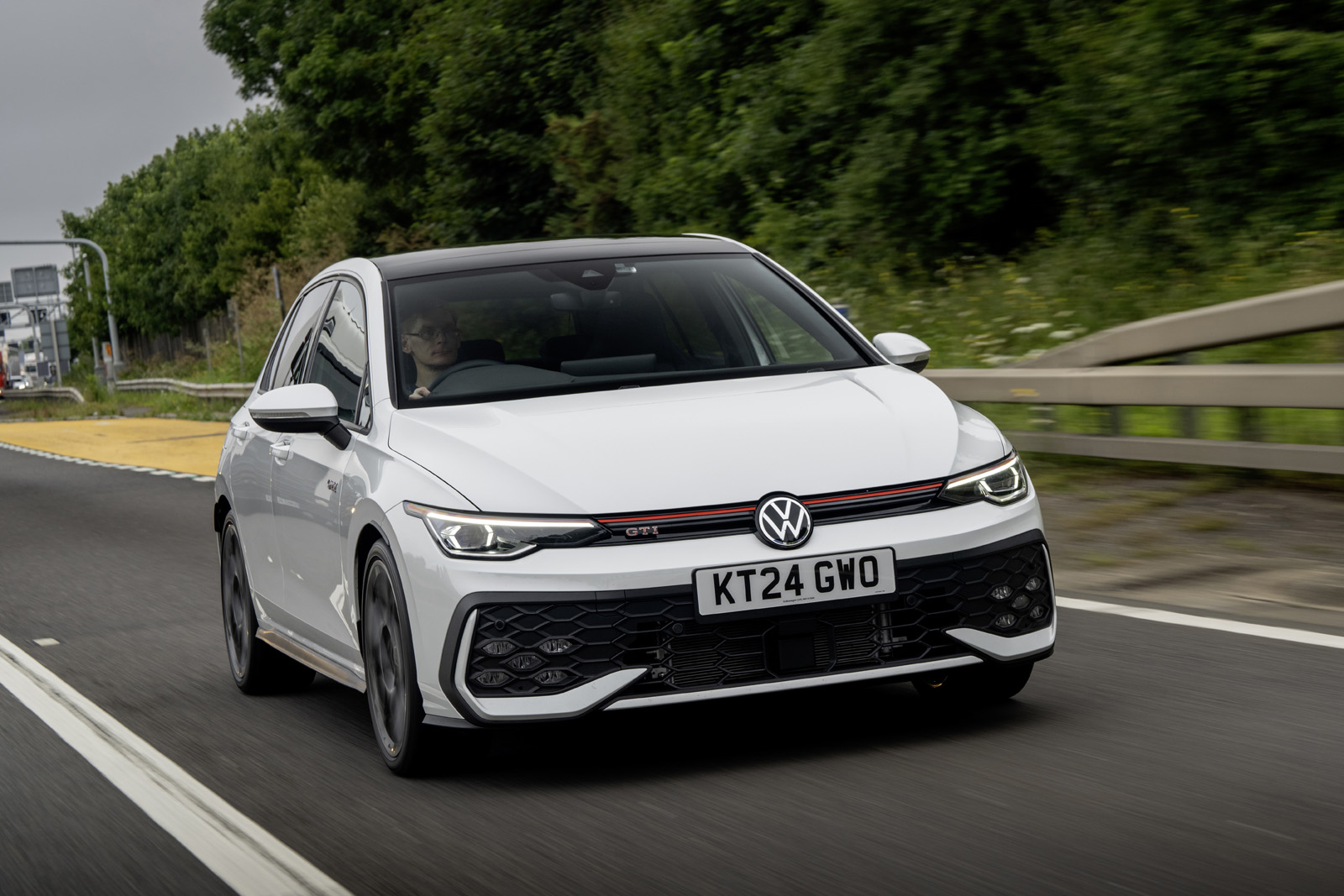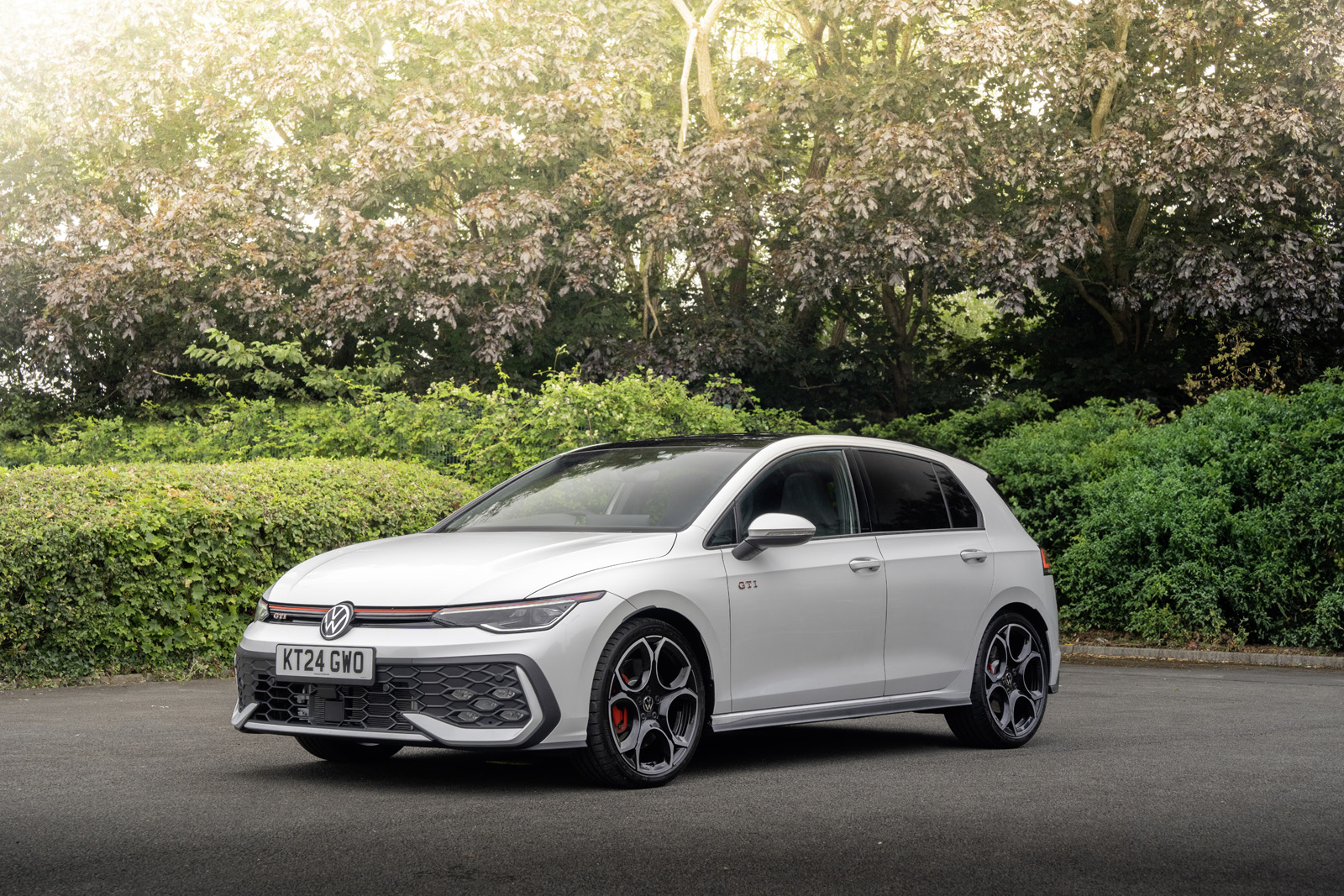As with the exterior, the latest Golf leans heavily into its hot hatch history when you climb aboard. Despite the de rigueur addition of multiple TFT screens, you know instantly that you’re sitting inside a GTI.
The tartan-checked seat trim is present and correct, as is the red stitching for the chunky three-spoke steering wheel. Typically for a Golf, there’s a wide range of seat and wheel adjustments, allowing you to perfectly tailor your driving position.
The pedals are well spaced and neatly arranged. Visibility forward is good, but those trademark C-pillars create an awkward blindspot and the rear screen is shallow and on wet days gets quickly covered in moisture and road grime.
When the eighth-generation Golf was first launched, Volkswagen made much of it being an ‘all-digital’ Golf, with a 10in digital instrument cluster, a central infotainment touchscreen and many of the physical buttons pared back or replaced with haptic panels. That includes the buttons on the steering wheel stalks.
It all looked very slick, but there were flaws. The haptic buttons could be infuriating, while the touch-sensitive ‘slider’ below the screen for the audio volume and heating controls was frustratingly inconsistent and, worse, didn’t light up so you couldn’t see it at night.
The changes for the Mk8.5 GTI enabled by the new MQB Evo platform go some way to address that, as they have on the other Volkswagen Golf models we’ve tried. The system is built around a new and larger 12.9in infotainment screen, which uses its extra size to feature fixed controls for key functions along the top and bottom edges.
There’s still a ‘slider’ below the screen, but it’s a bit more intuitive to use and is now actually illuminated at night. Meanwhile, there are actual buttons on the steering wheel stalks, which is a welcome move.
That said, this tester found that the angle of them made them a bit difficult to use. Still, we’d rather have physical buttons than not, so let’s not grumble too much.
The touchscreen focus of the original eighth-generation model did raise concerns about a slight slump in perceived quality, with the introduction of a few lower-rent plastics.
Those have been somewhat addressed with this update and our test car showed a greater material richness. (VW has even painted the underside of the bonnet.) But we could still find a few panels that weren’t quite as robust as you’d hope.
On the plus side, refinement is relatively strong, with wind noise rarely a problem and roar from the tyres only noticeable on the coarsest surfaces. As with the seventh-gen car, the engine noise is augmented, meaning a sportier, more intrusive and artificial aural backdrop in Dynamic mode.
It’s best left in Comfort, where the small decrease in throttle responsiveness is more than a fair trade-off for the reduction in under-bonnet volume - although the 2.0-litre unit still retains a rorty edge.
As with all Golfs, the GTI is about as spacious as you’d need it to be, packing a decent amount of space into what is a relatively compact package.
Large adults will find enough head and leg room in the back, even if their view forward is compromised by the high-backed sports seats, while there are loads of thoughtfully arranged oddment space, including multiple cupholders, smartphone trays and deep door bins.
There’s a decent boot too – a respectable 374 litres of carrying capacity (way behind a Skoda Octavia’s, but around the class average) with the rear seats in place. A false floor can be lowered for taller items or raised to create an almost totally flat floor when the rear seatbacks are folded down (the rear squabs remain in place). Performance doesn’t come at the expense of practicality.



